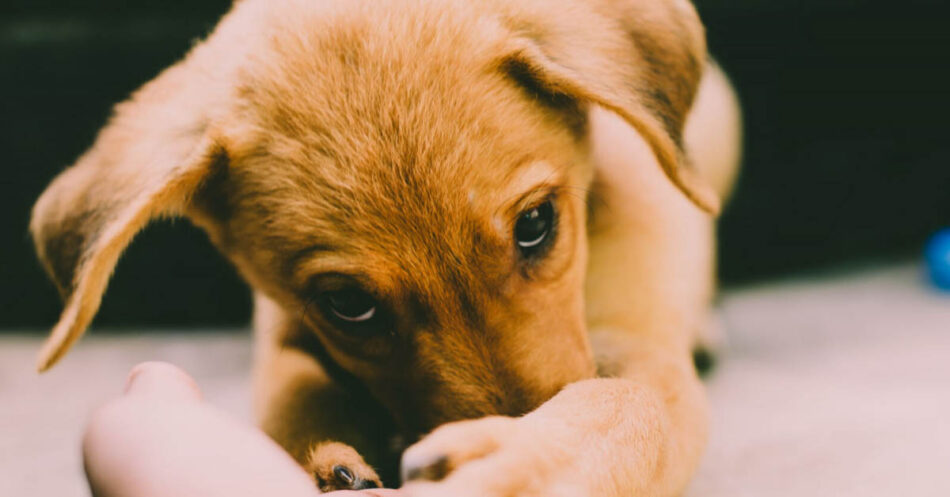
How to Help Your New Puppy Adjust to His New Home
This post may include affiliate links. Please read my disclosure policy.
There’s nothing quite like a puppy. Those paws that seem too big for the rest of their bodies, those wide innocent eyes, and that sweet puppy breath make me melt every time!
Over the years, my husband and I have survived four puppies together—Zeke, Buck, Chilly, and Tulip—all adopted between the ages of 8 and 16 weeks.
And yes, you read right. I said “survived.” Because as adorable and wonderful as they are, puppies are also a lot of work! And they wreak an incredible amount of havoc for such tiny little bundles. Believe me, I have the chewed slippers, gnawed furniture, and frayed rug corners to prove it!
Pin Me!

If you’ve just gotten a puppy or are thinking about getting one for the first time, don’t let that scare you—much. Because in the end, puppy-dom, which can last 12 to 24 months, is all worth it. We were rewarded with three wonderful well-trained, well-mannered pooches.
One thing my pups have taught me is the importance of the first few hours and days after adopting a new puppy. Giving your pup a good start can set the stage for the weeks and months to come. Here are a few tips to help make the new puppy transition as smooth as possible.
What to Do Before You Bring Your New Puppy Home
Get Reading
I’m sure you know it’s important to learn as much as you can about your new pup before he gets home (after all, that’s why you’re here after typing in “how to help new puppy adjust” on Google!). There’s so much information available online to help you prepare for your new arrival, like this potty training guide or my free downloadable new puppy checklist.
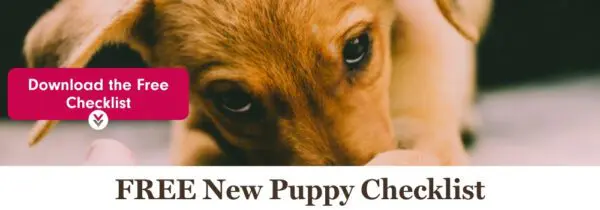
Go Shopping
Puppies may be little, but they need a lot of stuff! Before you bring your new friend home, you’ll want to stock up on essential puppy supplies. Make sure that your puppy has:
Food and water bowls. Look for puppy-sized food and water bowls to start, like this water and food bowl set with a silicone mat. You may want to replace them with larger ones as he grows.
A collar or harness and a leash. These essentials will make going for rides in the car or a walk in the park a breeze and can also help identify your new dog in case (heaven forbid!) he decides to go for a quick jog without you. Make sure that any wearables fit your pooch well. His collar and harness should be loose enough for you to fit two fingers underneath them, but not so loose that he can squirm out of them. Personally, I’m a fan of these styles from Unique Style Paws and Bolex.
A crate. Ideally, crates should be big enough for your puppy to turn around, lie down, and stand without bumping his head. If you choose to crate-train your puppy, consider purchasing a crate that’s large enough for him to keep using when he’s full-grown. Many crates, like Petmate’s Aspen model, come with moveable partitions, so you can give him enough space to do his business in one corner and go lie down in the other.
Comfy puppy beds. Dogs need to have their own space, and a crate ora plush, stylish bed can make a cozy “den” for your pup to retreat to.
Food. Find out what food and feeding schedule your pup has been used to. Any changes you make in feeding should usually be done gradually.
Supplements. Yes, even puppies need a nutritional boost. The best supplement will aid good digestion, a calm demeanor, and support growth. My favorite is Vetericyn’s ALL-IN™ Life-Stage Supplement. Start with the puppy formula, and as your dog grows, you can transition him into the adult and senior formulas. Use the code: PETLIVING to get 20% off.
Pet Insurance. I’ve been recommending pet insurance for a long time now. I can’t tell you how many thousands of dollars it’s saved me! Embrace Pet Insurance not only covers unexpected accidents and illnesses, but certain plans also reimburse you for routine wellness care, grooming, and training!
Puppy toys for teething and play. Doggie playthings can easily take over your space, but it’s important for your puppy to have enough variety that he doesn’t become bored when he’s left to entertain himself. Many dog parents choose to leave out three or fourtoys at a time and rotate them every few days so that their novelty doesn’t wear off. Also, arming yourself with an assortment of toys suitable for puppy teeth, like Kong’s Puppy Chewer, can help ease separation anxiety and problems with chewing. For more chewing and teething help, check out this post.
Cleaning products. Expect that your puppy will have accidents while you’re potty training him, and be prepared to clean them with enzymatic cleaners to eliminate odors. For times like these, I love using Kinderbean enzymatic cleaner for hard surfaces and carpets. I also use this blacklight flashlight designed specifically for detecting pet stains to make sure I don’t miss any spots when cleaning up a mess. For more comprehensive information on urine marking, see this post.
Start Puppy Proofing
A little puppy proofing may save you a lot of frustration later on. And it will also keep your precious puppy safe!
- Get down on all fours to get a “dog’s eye” view of your home. Puppies learn about their world by chewing, and they put their little mouths on everything. So it’s important to watch out for anything with sharp edges and to move or block access to anything you don’t want him chewing, licking, or ingesting.
- Secure shelves, televisions, or anything else that could be knocked over if your pup crashes into them or tries to jump on them.
- Don’t forget your garbage! If your new puppy will be spending time in an area of the home where he has access to a trashcan, secure it so that it can’t be knocked over when he’s busy exploring or foraging for food. Also, if your current garbage can isn’t puppy-proof, I’d recommend buying a sturdy touchless trashcan that can stand up to your new pup.
- Especially in the beginning, you may find that you prefer to keep your puppy confined to a small area of your home (probably one without carpeting!) when you can’t be around to supervise him directly. Baby gates can be very useful for this. They can also help to keep your pup away from stairs or other areas of the home that might not be safe for him.
- You may want to consider removing throw rugs from areas where your puppy will be spending a lot of time. This will make cleaning up the inevitable accidents much easier!

The First Few Days with a New Puppy
During your puppy’s first few days in his new fur-ever home, prepare yourself for lots of messes and chewing (although if you’ve puppy-proofed well, these will be easier to deal with). Your pup may also experience a little anxiety. After all, he’s probably away from his mother and litter mates for the first time in his young life. As his new doggie parent, you can do a lot to help him adjust and settle in a new environment.
Spend Time Together
You and your new puppy need to take some time to get to know each other. As tempting as it may be to invite everyone you know over to meet your adorable new addition, it may be better to wait a few days. That way, your little pooch has a chance to bond with his new family and grow comfortable in his new home.
Supervise Greetings
If you have other pets in the house, it’s a good idea to introduce them to your new puppy one by one in a supervised environment.
Pro tip: don’t be worried if your adult dog growls at a new puppy, as long as your older pooch isn’t hurting the new addition. Growling and grumbling are actually important forms of communication for your pup to learn!
Establish a Routine
Dogs thrive on consistency. Whenever possible, leave and return home, feed, walk, and play with your puppy at approximately the same time each day. Establishing a predictable routine from the very start will make your puppy feel safe and secure, reducing the chances of anxiety developing.
Crate Training
Crate training a puppy, if you choose to do it, can be an effective way to keep a new pooch from destroying the house while you run to the store. While the crate should never be used for punishment, crating actually takes advantage of your puppy’s instincts as a den animal and can help protect furniture and rugs. Don’t forget about potty training your puppy as well!
Set Boundaries
As long as we’re on the subject of consistency, it’s important to realize that dogs also need predictable boundaries. Start enforcing house rules from day one. Letting your puppy break the rules “just this once” will only confuse him when he’s not allowed to do the same thing the next time.
From day one, your new puppy should sleep in the spot that has been designated for him. He should be kept off of pieces of furniture and out of areas of the house where he won’t be allowed later on in life. As difficult as it might be to resist those pleading puppy dog eyes or that pathetic whimper, he really will be happier and more secure later on if you stick to the rules.
What NOT to Do When You Bring Your New Dog Home
I know you’ll be very excited to start a brand-new chapter in your life with your new pup! But our four-legged friend may feel a little overwhelmed by his new chapter. So, here are a few friendly don’ts to keep in mind, especially in the first few weeks:
- Don’t host a welcome party: Resist the urge to invite everyone over to meet your new dog or to go to a dog park and show him to anyone there. Too many new people can overwhelm your pooch. Plus, you’ll want to avoid the risk of your new pup getting sick or catching something from other dogs or even people, especially when he’s yet to have his vaccinations.
- Don’t smother with affection: After bringing your puppy home, give him space to explore and settle in on his own terms. Too much attention can be intimidating, especially from younger family members.
- Don’t rush introductions: If you have other pets, keep them separated from your new dog initially to prevent stress and potential conflicts.
- Don’t change his diet right away: Stick to the food he was previously eating to prevent digestive issues. Transition to new food slowly after the first week.
- Don’t give full house access: Limit your new dog’s access to the entire house. This helps prevent unwanted behaviors as he adjusts.
- Don’t take him to the groomer or daycare: Wait until your pup is more comfortable in his new home before introducing him to more new experiences like grooming or daycare. Plus, you’d want to keep that puppy smell a little while longer! Once he’s had his vaccinations, ask your veterinarian first if it’s safe for your pup to get groomed or to go to a doggy daycare. We know socialization is important, but your pup’s health comes first!
- Don’t ignore his health: Keep an eye on your new dog, especially their stool, as stress can cause issues to arise. Schedule a vet visit, but try to avoid immediate stressful trips if possible.
Most Importantly, Love Your New Puppy
The first few days and weeks with a new puppy (or even a recently adopted dog!) are both exciting and exhausting! But most dog parents agree that the joys far outweigh the challenges. Above all, enjoy your precious little bundle. When the puppy days are behind you and you’re enjoying the amazing dog he’s become, you’ll probably look back and think about how fast the time went by.
In the meantime, if you’re still having trouble with new puppy chewing, check out my tips on how to stop puppy chewing for good.
Chew on this: I may receive a small commission for affiliate links, but all products I “dig up” are ones I paw-thentically love!








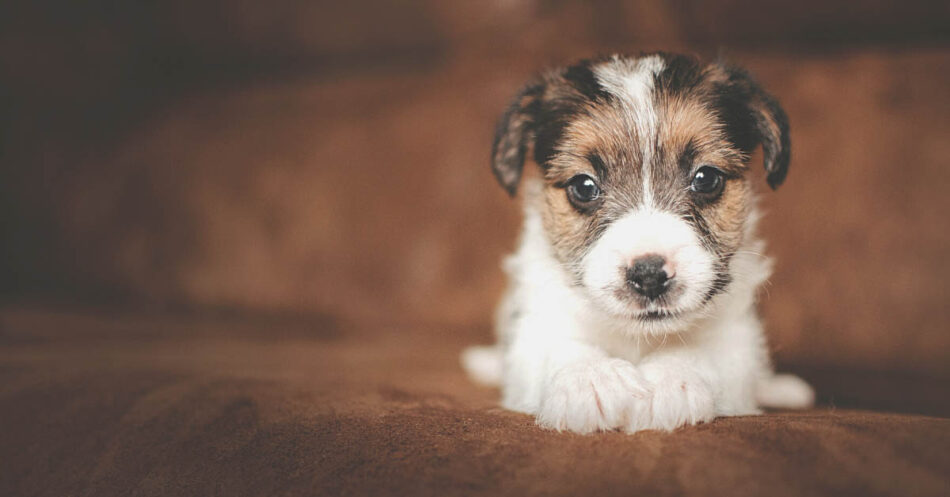
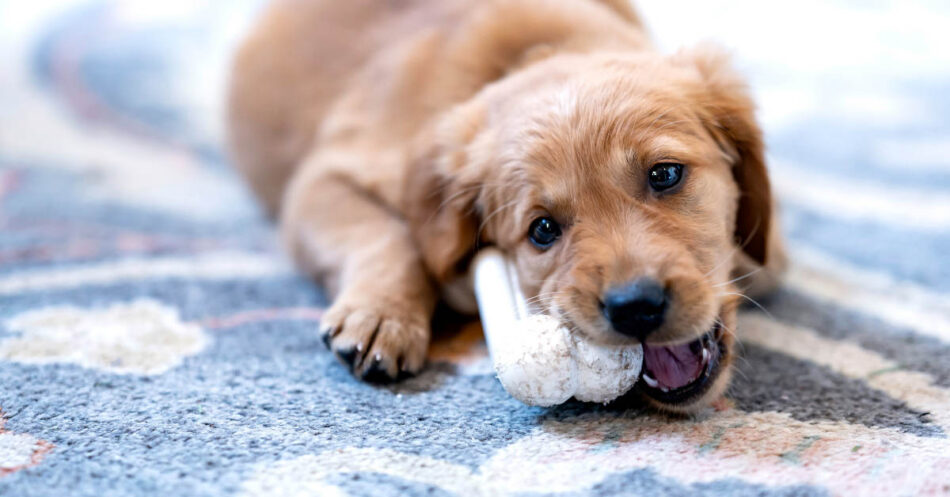
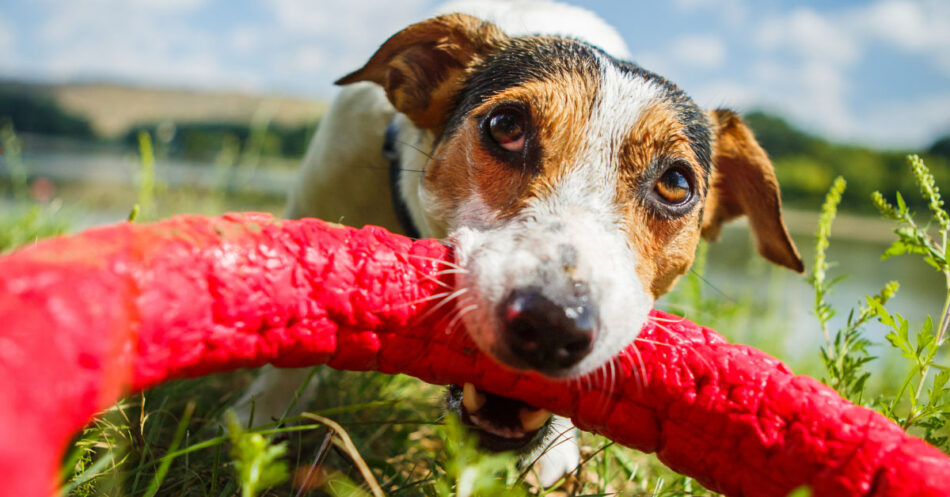
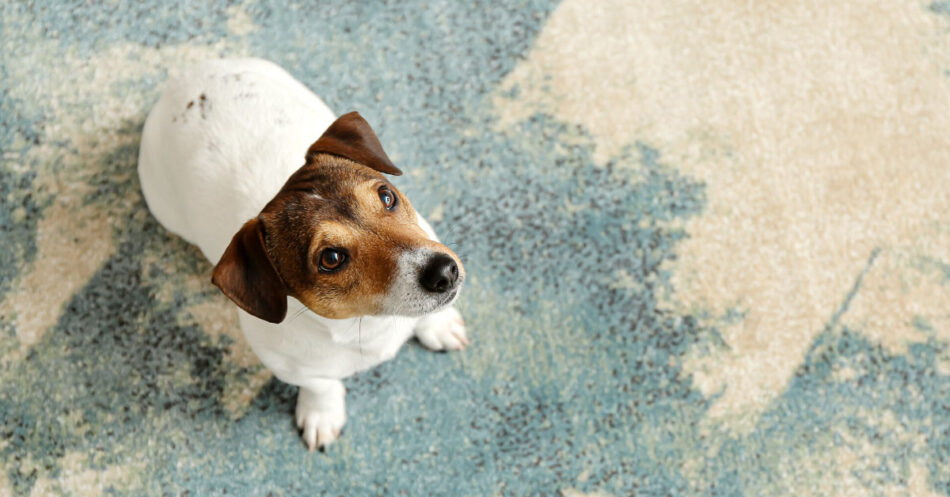
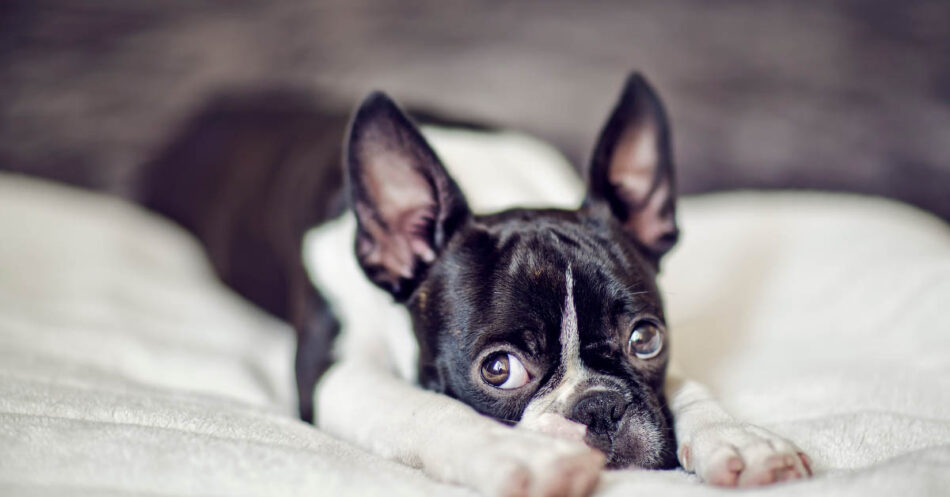

Great tips! I always “transform” my view to the puppy eyes in order to see any dangers. This is the most important thing to do because preventing the puppy from getting hurt should be first on the list 🙂
So true! Such a simple thing can give big perspective! Thanks Mary!
Shopping in advance and making sure you have good supplies before adopting a pet could really make a huge difference. Being more prepared to help it settle into your home could be an amazing way to start off the relationship we’ll have with the dog. I’ll look for a pet store in the area where I can get supplies first before I adopt a puppy for our family.